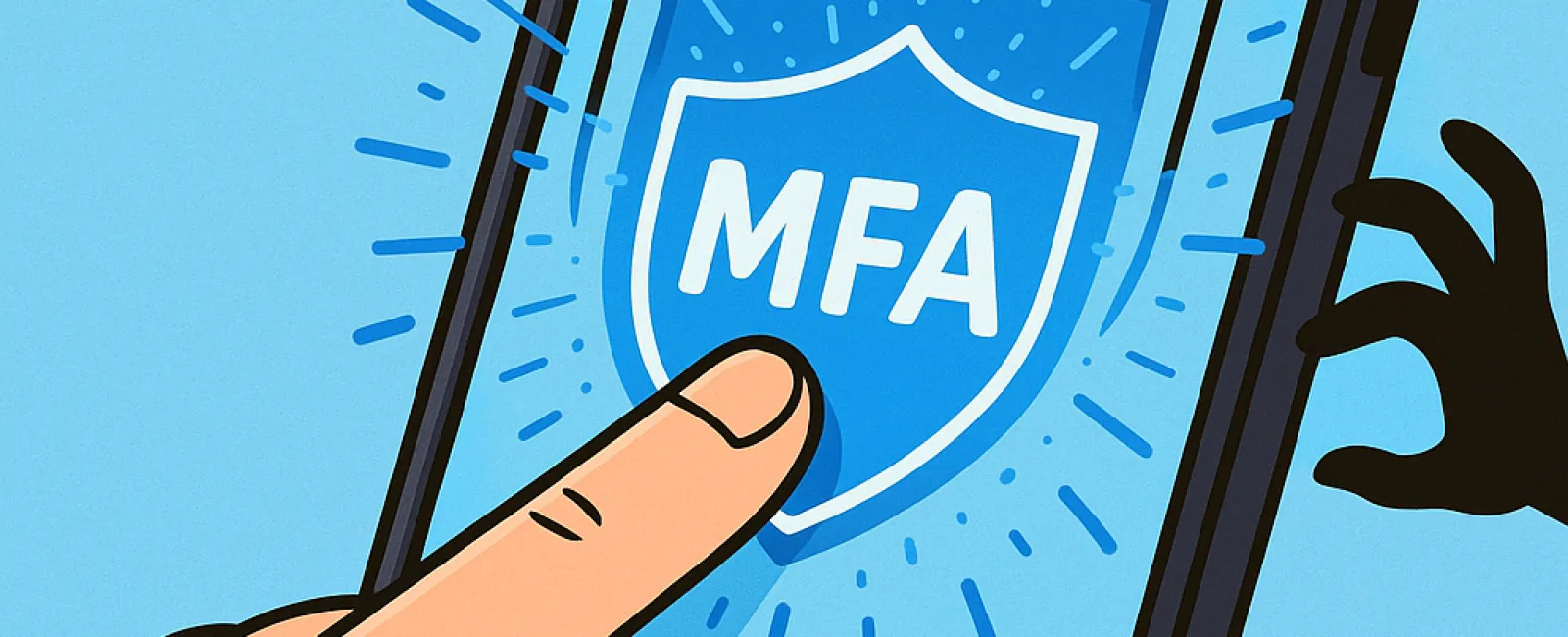October 27, 2025
Imagine never locking your front door or leaving your office completely unprotected overnight—sounds risky, right? The same logic applies to your online security. That's why multifactor authentication (MFA) is essential for protecting your digital world.
MFA acts as a powerful second barrier beyond just a password, which alone can be vulnerable to theft, guessing, or phishing attempts. By requiring an additional verification step like a text message code, an authentication app prompt, or even a fingerprint scan, MFA ensures that even if a hacker obtains your password, they won't be able to breach your account without this second layer of defense.
A Simple Extra Step That Makes a Huge Impact
If your password is like locking the front door, then enabling MFA is like activating a comprehensive security system for your online accounts. While it's not mandatory, having this added protection means you're safeguarded even if one line of defense is compromised.
Whether called "two-step verification," "two-factor authentication," or a "one-time password," these terms all describe the same principle: verifying your identity through at least two distinct methods before granting access to sensitive information.
MFA comes in many convenient forms including confirmation emails during account creation, security questions from banks, text message codes, push notifications, and automated phone calls. Most processes require just a quick tap or code entry — making security effortless.
How MFA Protects You in Real-Life Scenarios
For users, MFA is a quick interaction — just click a notification or enter a code and you're secure. But for cybercriminals, it's a significant hurdle. If anyone tries to access your account without authorization, MFA immediately notifies you or demands a verification code, preventing unauthorized access and giving you the chance to change your password before any damage occurs.
Even if an attacker tricks an employee into sharing credentials, without the second authentication factor, their efforts will be blocked. Studies from Microsoft confirm that enabling MFA cuts the risk of account compromise by over 99.2%, and 99.99% when fully enabled.
Essential Places to Enable MFA and How to Do It
Prioritize setting up MFA on the following critical platforms:
- Online banking and financial services
- Email accounts and cloud storage solutions
- Social media profiles
- Work-related logins containing client or confidential data
Activating MFA is typically straightforward. Many popular services have built-in MFA options to enable with just a few clicks. Adding an authenticator app can further enhance security, especially for employee logins.
In summary, MFA is a fast, cost-effective way to prevent most hacking attempts. Taking just a few moments to set it up today can protect you from costly and lengthy data breaches down the road.
The fastest way to implement MFA is by contacting your IT provider. A skilled managed service provider (MSP) can simplify the setup. If you need cybersecurity guidance, click here or call us at 314-993-5528 to schedule a 10-Minute Discovery Call with our team now.



